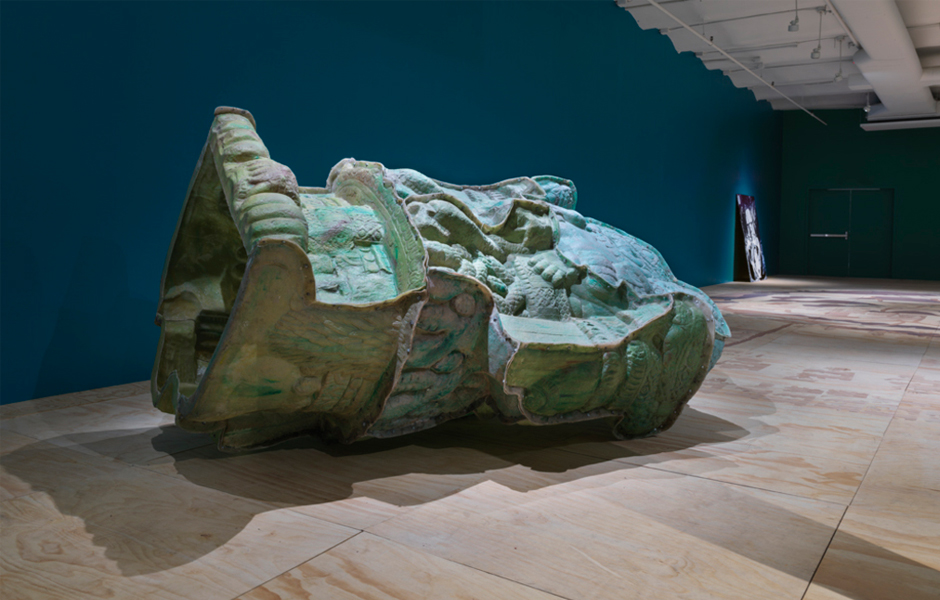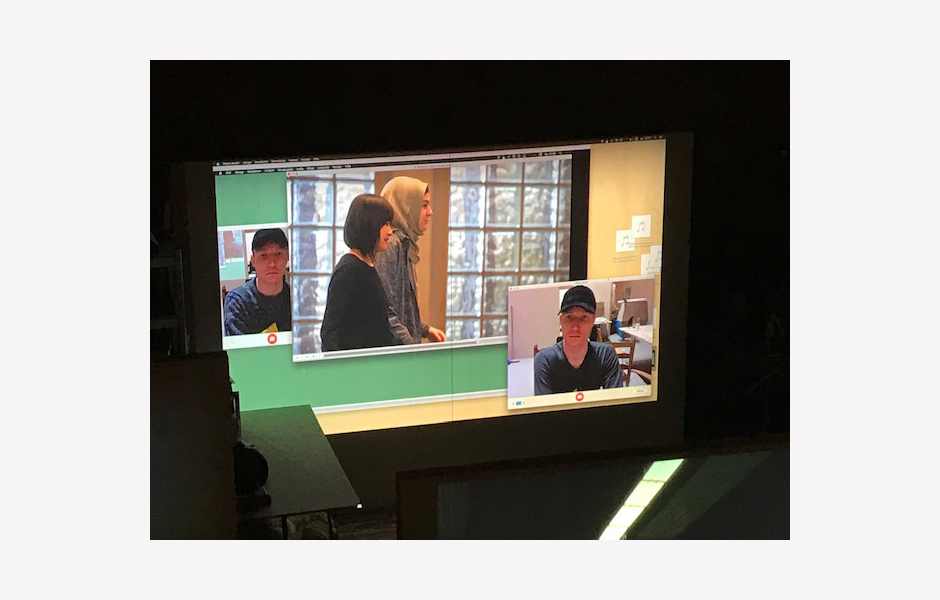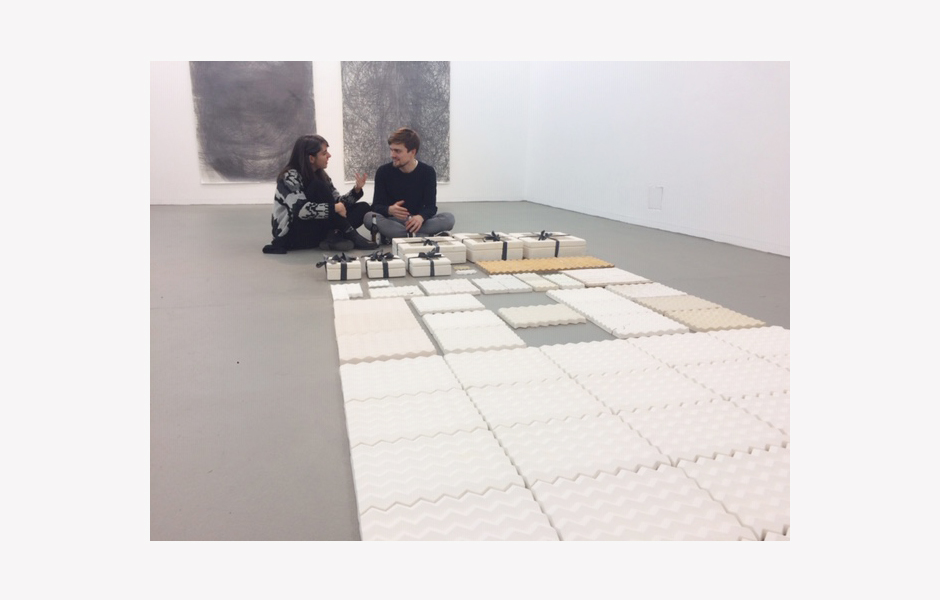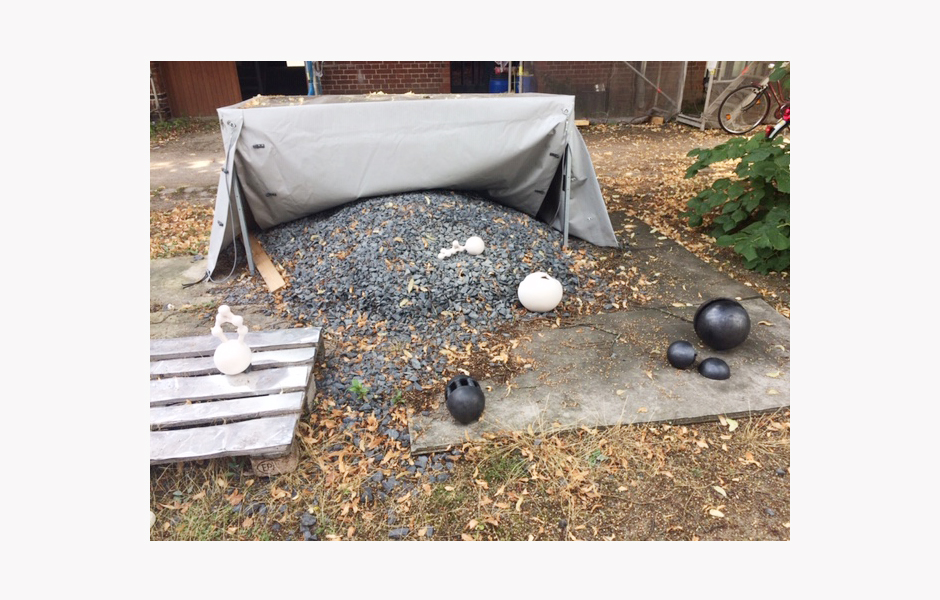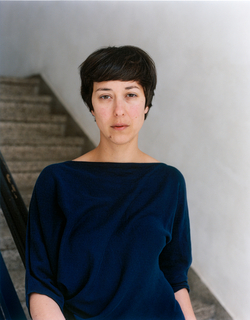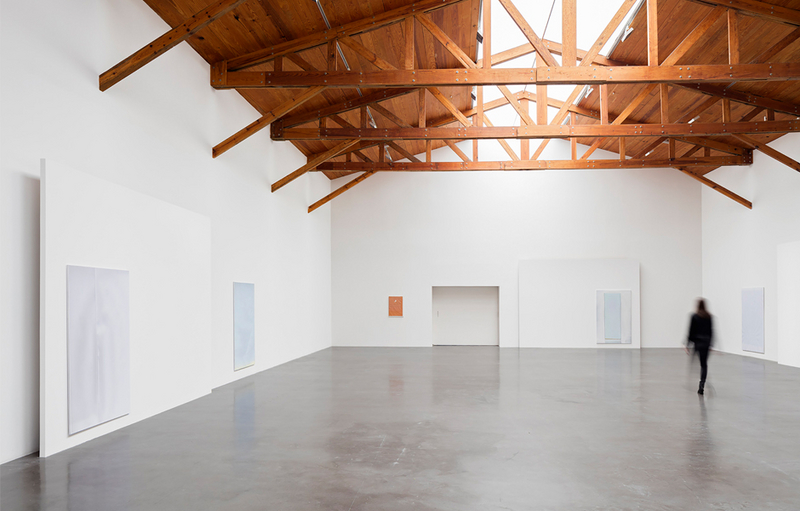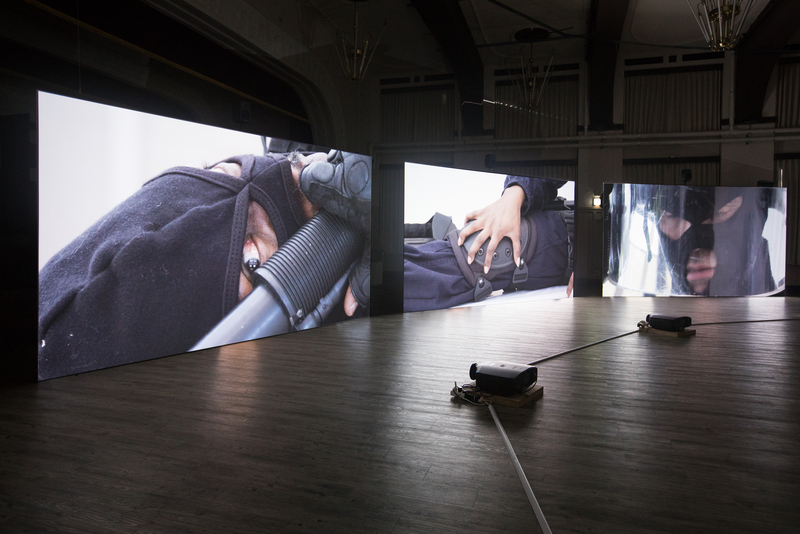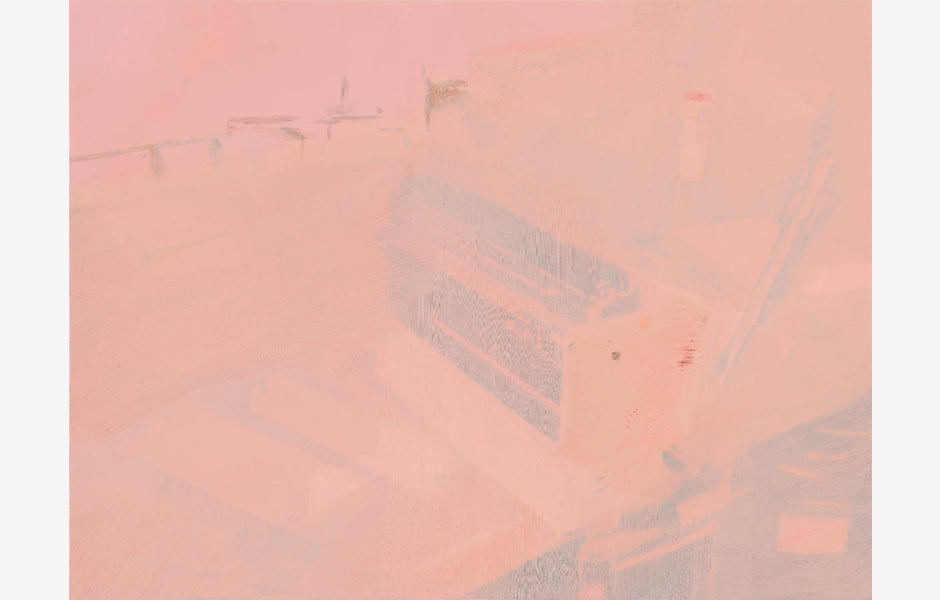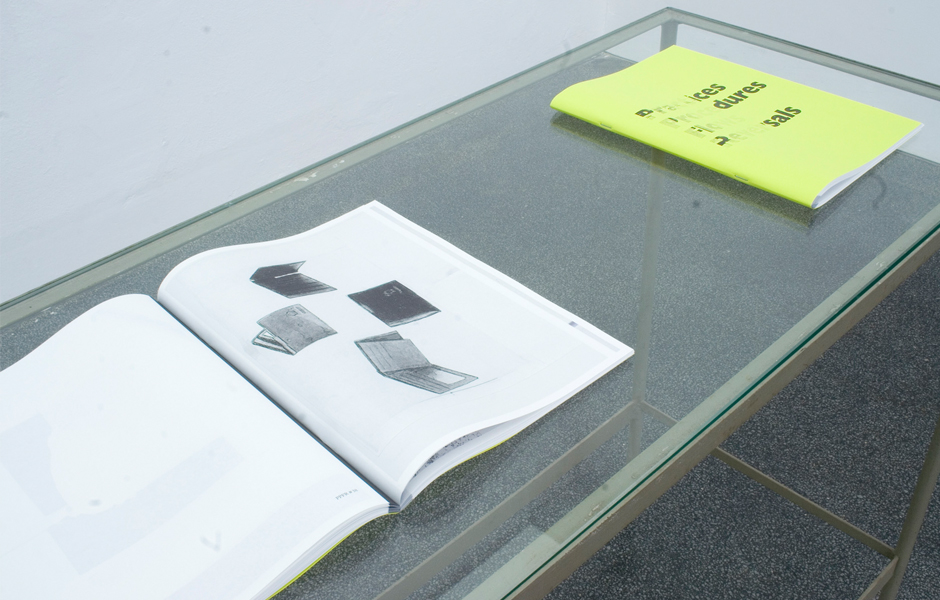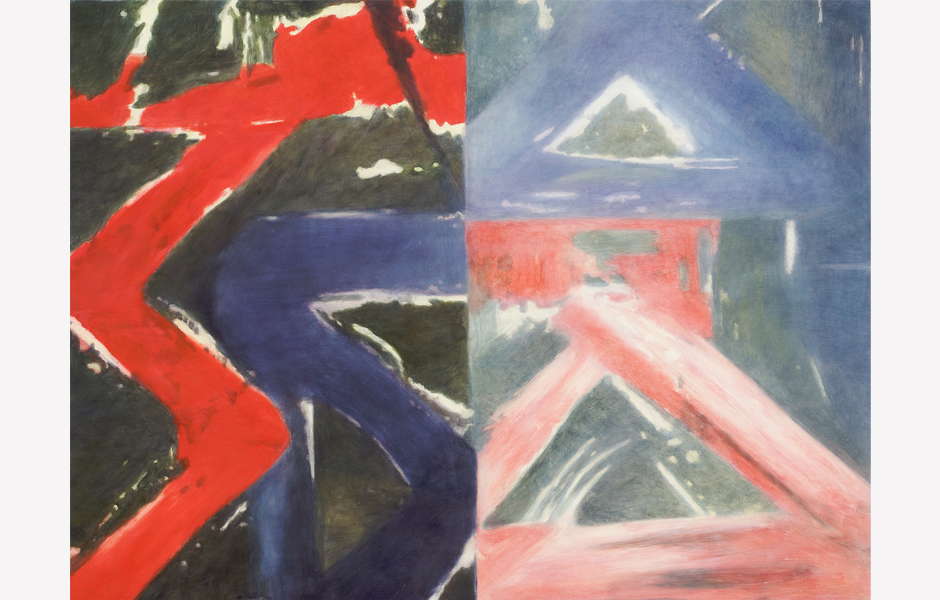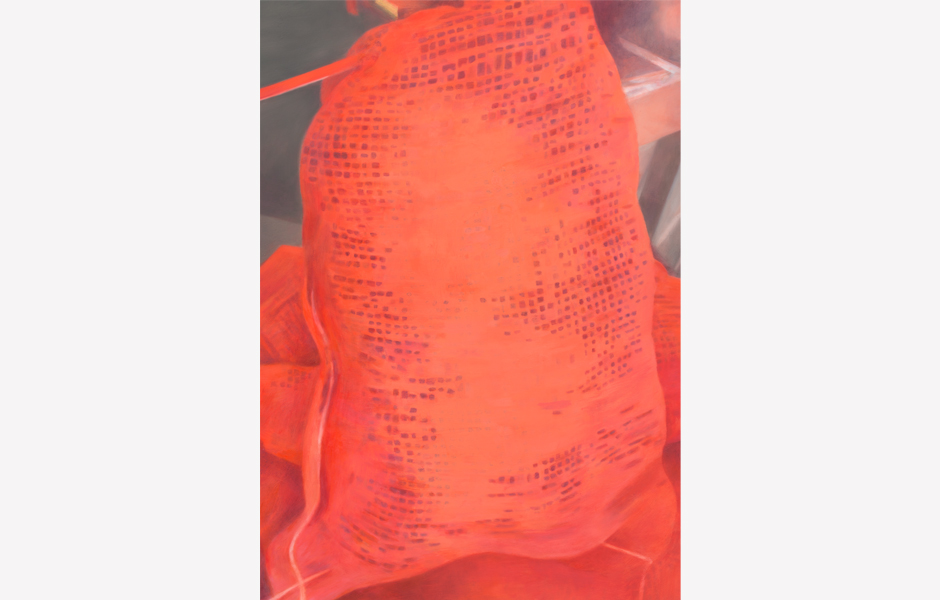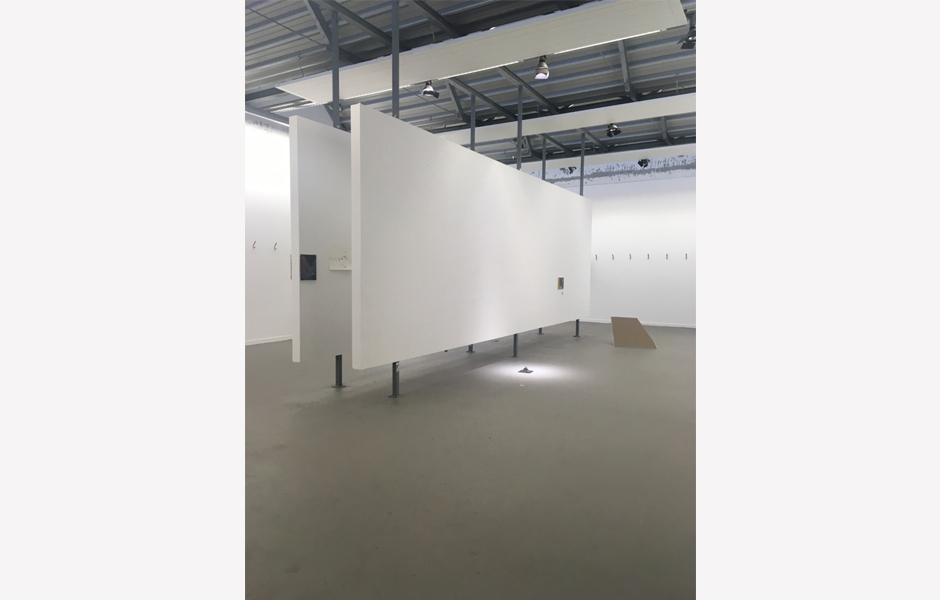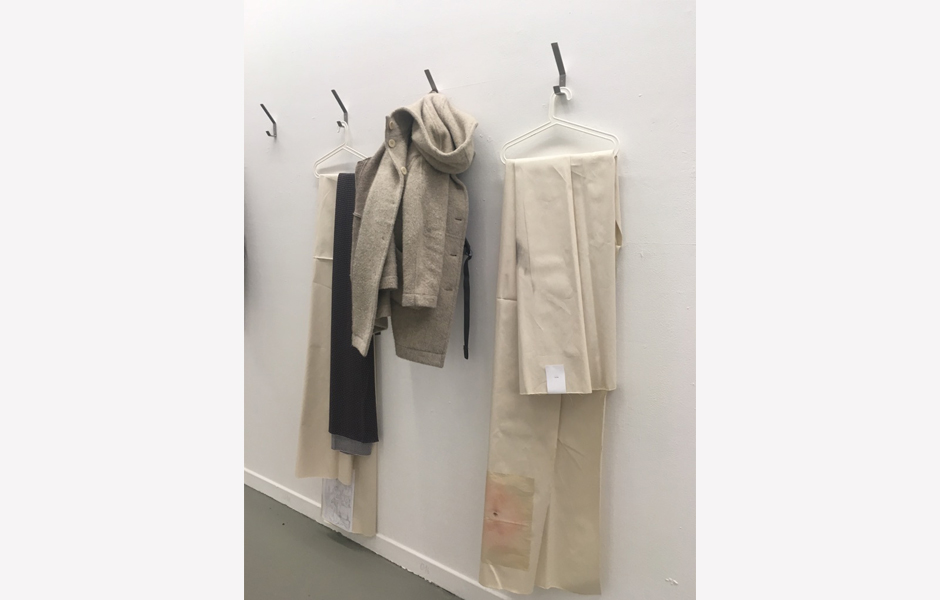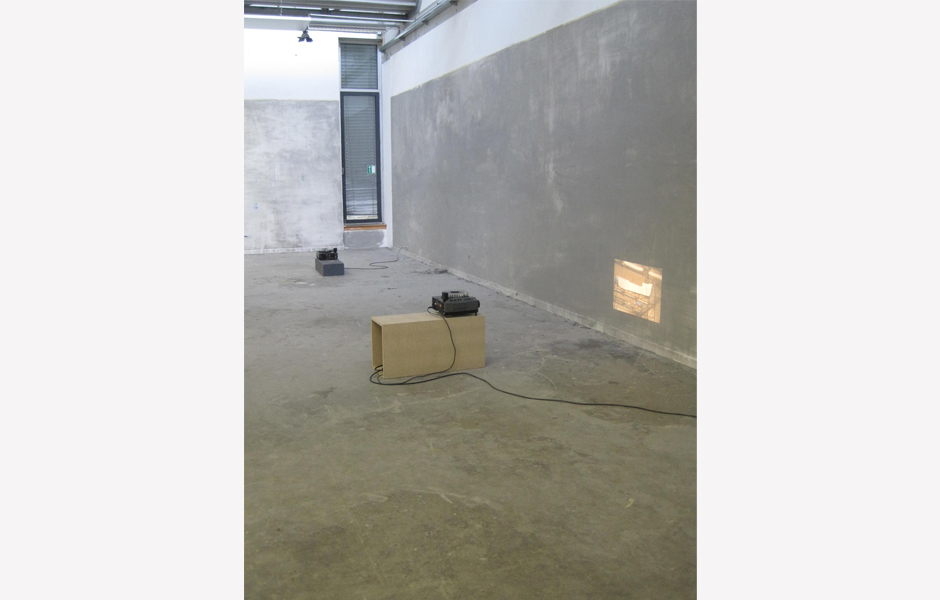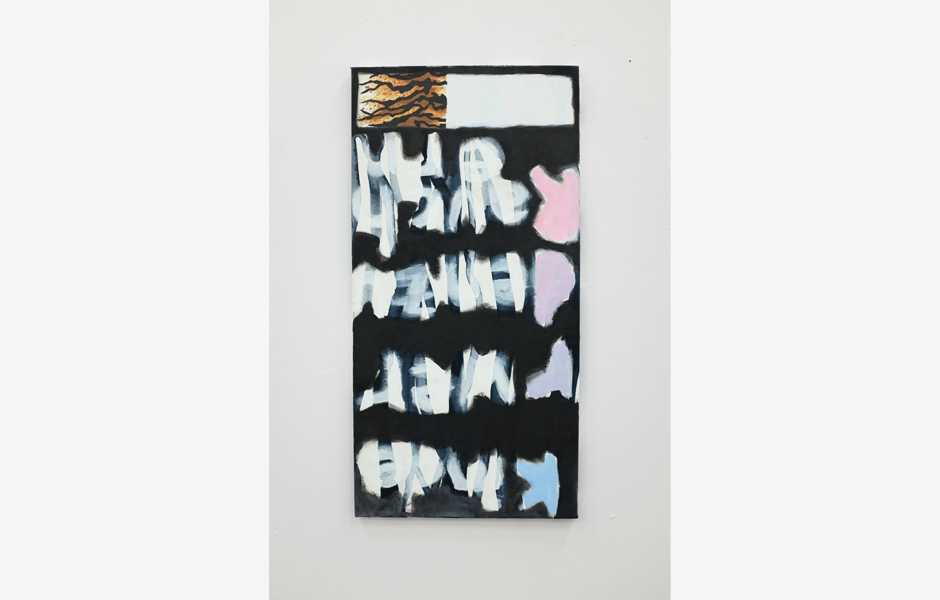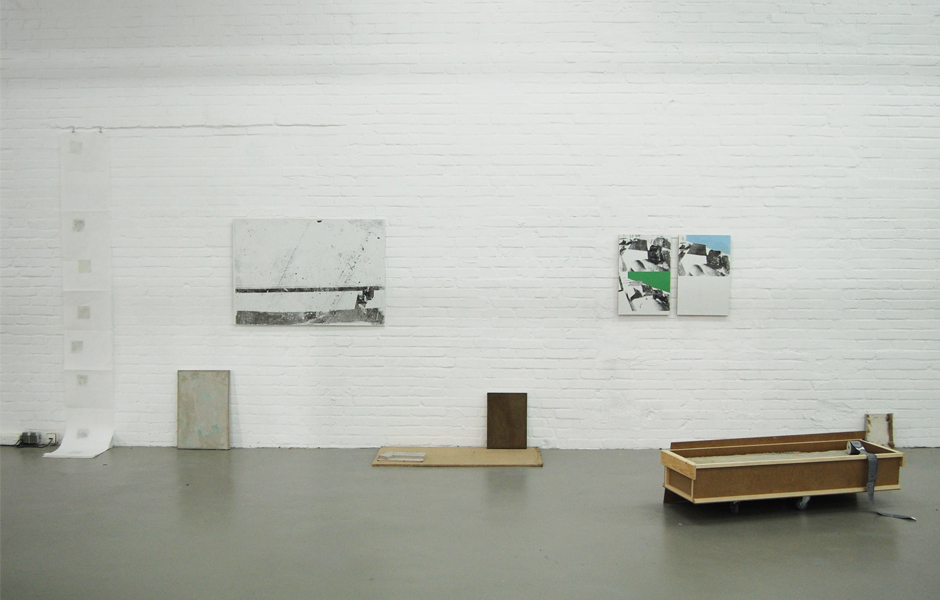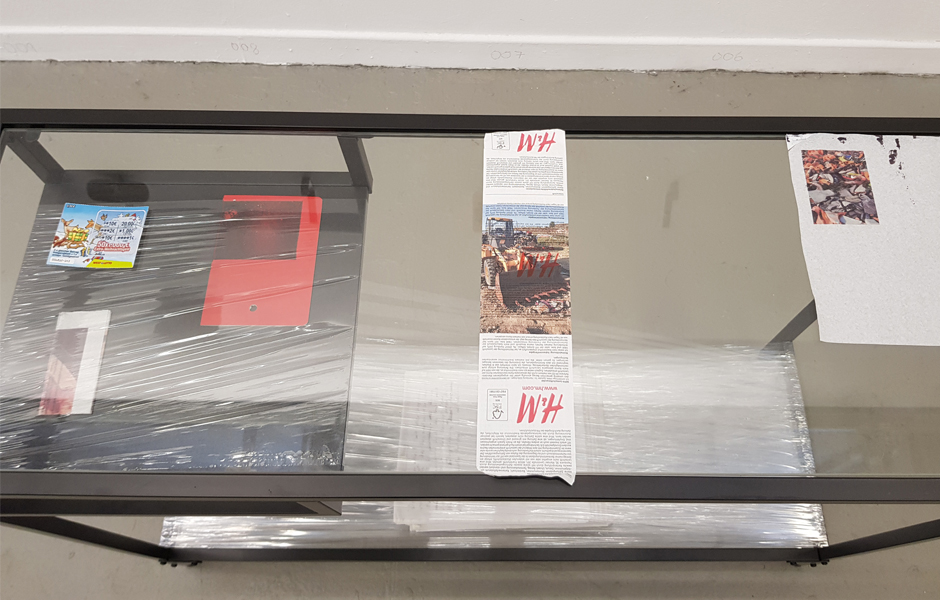Studying in artistic classes is what makes an art academy special and defines the entire working atmosphere, but also the institutional organisation of the university. Students from all semesters and degree courses work in studio communities of around 15 to 35 people under the guidance and supervision of international artists. The diversity of artistic positions in teaching as well as the joint study of students from the Fine Arts degree course and the teaching degree programmes ensure a consistently high level and stimulating potential of artistic studies.
Prof. Juliette Blightman
Extended Painting
Ph. +49 251 83 61021
folgt
Office hours: by appointment
Leonardo-Campus 2
Room 021
Prof. Mariana Castillo Deball
Sculpture
Ph. +49 251 83 61147
mariana.deball[at]kunstakademie-muenster.de
Leonardo-Campus 2
Room 147
Mariana Castillo Deball was born in Mexico City in 1975. She lives and works in Berlin and Mexico City. Castillo Deball studied visual arts at the Universidad Nacional Autónoma de México, Mexico City, graduating with a Master of Arts degree in 1997. In 2003, she completed her postgraduate studies at the Jan Van Eyck Academy in Maastricht (NL). Mariana Castillo Deball combines her artistic practice with seminars, lectures and workshops.
Solo exhibitions
Galeria Barbara Wien , Berlin, Deutschland (2024); ASU Art Museum Arizona State University, Tempe, Arizona, USA (2024); Mendes Wood DM, Brüssel, Belgien; MUDEC, Mailand, Italien (2023); Pivô, São Paulo, Brasilien (2023); Pinksummer Gallery, Genova, Italien (2022); London Mithraeum Bloomberg SPACE, London, Großbritannien (2022); Museum für Gegenwartskunst, Siegen, Deutschland (2021); MUAC Mexico City, Mexiko (2021); Atrium Museum, Araba, Spanien (2021); -Towner Eastbourne, Großbritannien (2021); Casa de México en España, Madrid, Spanien (2021); Modern Art Oxford, Oxford, Großbritannien (2020); ACE Open, Adelaide, Australien (2020); New Museum, New York, USA (2019); MUMA, Monash University, Melbourne, AU (2019); Reva and David Logan Center for the Arts, University of Chicago, USA (2018); Museo Amparo, Puebla, Mexico (2018); SCAD Museum of Art, Savannah Georgia, USA (2018); Galerie Wedding, Berlin, Germany (2017); San Francisco Art Institute, San Francisco, USA (2016); Museo de Arte Contemporáneo de Oaxaca, Mexico (2015); Hamburger Bahnhof, Berlin, Germany (2014); Musée Régional D’art Contemporain, Sérignan, France (2015); CCA, Glasgow, Great Britain (2013); Chisenhale Gallery, London, Great Britain (2013); Museo Experimentelles El Eco, Mexico City, Mexico (2011); Museum of Latin American Art, Long Beach, USA (2010).
Group exhibitions (selection)
24. Biennale of Sydney, Australien (2024); Museum Tamayo, Mexico City, Mexiko ( 2024); Haus der Kulturen der Welt, Berlin, Deutschland (2024); La Biennale di Venezia, Italien (2022); MUMOK, Wien, Österreich (2022); Fondazione Sandretto Re Rebaudengo, Turin, Italy (2018); LACMA, Los Angeles, USA (2017); 32nd São Paolo Biennial, Brazil (2016); Liverpool Biennial, Great Britain (2016); 8th Berlin Biennale, Berlin, Germany (2014); documenta 13, Kassel, Germany (2013); 54th Venice Biennale, Venice, Italy (2011).
Mariana Castillo Deball closely interlaces art and research. Her artistic works often focus on archaeological finds, which the artist analyses and presents in terms of their cultural utilisation. In this, traces of use of the objects come into focus as do the artist’s own free associations with the history of the found or already archived objects. This process of deconstruction gives rise to works in very different media, such as drawing, film, sculpture, installation and performance, with which Castillo Deball considerably expands the possibilities of artistic representation.
The class of Mariana Castillo Deball is an interdisciplinary working artist class. In this context, students engage with their individual points of view in the form of different media and modes of expression.
The interpretation of the concept of art itself can be found in the works in the following way: art is an essential part of life, but not the only relevant one. That is why it is important to integrate the other areas of life into art and to engage with them reciprocally.
The discourse in the class deals intensively, among other things, with various cultural, social and linguistic phenomena, which result in particular from the internationality of many of the students.
Prof. Marieta Chirulescu
Painting
Ph. +49 251 83 61029
chirulescu[at]kunstakademie-muenster.de
Office hours: by appointment
Leonardo-Campus 2
Room 029
Marieta Chirulescu (b.1974, Sibiu) lives in Berlin, Germany.
Selected solo exhibitions include: Private Life,Foksal Gallery Foundation, Warsaw (2025), They said so, Galeria Fonti, Napoli (2023); Gregor Podnar, Berlin (2021); Plan B, Berlin (2020); Foksal Gallery Foundation, Warsaw (2019); Pale Fire, Kurimanzutto, Mexico City (2016); Kunsthalle Lingen (2014); White Cube Bermondsey, London (2011); Kunstverein Nürnberg (2011); Kunsthalle Basel (2010); Kunsthalle Mainz (2009); Projektraum der Temporären Kunsthalle, Berlin (2009).
Recent group exhibitions include: Pictorial Resonance, Galerie Thomas Schulte, Berlin (2024); Sediments. The Matter-Image, Salonul de proiecte, Bucharest (2023); todos juntos (all together), Kurimanzutto, New York (2022); Parthenope, Lighea ed altre storie, Villa Doria d’Angri, Napoli (2021); Local talent, Sprüth Magers, Berlin (2020); THE GAP BETWEEN THE FRIDGE AND THE COOKER, The Modern Institute, Glasgow (2017); #12 / Folies d’hiver, Villa Medici, Rome (2017); Präsentation 2015 Villa Massimo, Martin Gropius Bau, Berlin (2016); Image Support, Kunsthall, Bergen (2016); Painting Forever!, KW Institute for Contemporary Art, Berlin (2013).
In her works, Marieta Chirulescu reflects on the aesthetic and conceptual preconditions of contemporary painting as well as on the conditions of the image in the present. Chirulescu’s approach of non-figurative painting recalls the 20th-century history of abstraction, while on the other hand, it also incorporates digital printing processes and possibilities of image creation such as scan, screenshot and photography into her work. Moreover, through a process of technological reproduction and manipulation, Chirulescu disassembles and erases found images, of which often only sediments and traces remain; in this way, she simultaneously refers to the status of the original and to constructions of seeing in the painting of today.
- 2025: Likable, Kunsthaus Glarus
- 2023: Hot Lava Night, Kunsthalle Bielefeld
- 2022: Ludwig Forum Aachen
- 2020: Kunstmuseum Winterthur
- 2016: Center for Contemporary Art, Tel Aviv and Museion Bolzano (both in 2019) Künstlerhaus – Halle für Kunst & Medien, Graz
- 2015: Museum of Contemporary Art Chicago
- 2014: The Kunsthal Charlottenborg, Copenhagen State of Concept, Athens
- 2012: Tate Modern Oil Tanks, London
Screening and lecture at the Humboldt University Berlin (2025)
Cytter was awarded the Guggenheim Fellowship in 2021.
Prof. Nicoline van Harskamp
Performative art
vanharskamp[at]kunstakademie-muenster.de
Office hours by appointment by e-mail
Leonardo-Campus 2
Room 129
Website of Nicoline van Harskamp
Website of the class of van Harskamp
Englishes MOOC – A project from Nicoline van Harskamp
Nicoline van Harskamp was born in the Netherlands in 1975 and attended the Royal Academy of Fine Arts in Den Haag, Chelsea College in London and the Rijksakademie in Amsterdam.
Her performative works were staged live at, among others, the Steirischer Herbst in Graz, Stedelijk Museum in Amsterdam, Tate Modern in London, KunstWerke in Berlin, Witte de With in Rotterdam, New Museum in New York, Arnolfini Gallery in Bristol, Archive Kabinett/Scriptings in Berlin, Tenderpixel in London and the Kaaitheater in Brussels.
Nicoline van Harskamp's recent solo exhibitions include Project Arts Centre in Dublin, Kunsthalle Münster, BAK in Utrecht, C3A in Cordoba and Kunstraum in London. She has taken part in numerous group exhibitions such as at the Van Abbe Museum in Eindhoven, Frac Lorraine in Metz, Nasjonalmuseet in Oslo, De Appel in Amsterdam, Frankfurter Kunstverein, Clark House in Bombay, Ellen Art Gallery in Montreal, Ujadovski Castle in Warsaw, MUAC in Mexico City, Serralves Museum in Porto, Waterside Contemporary in London, Manifesta 9 in Genk, Performa 11 in New York, and the biennales of Sydney, Gothenburg, Taipei, Moscow, Ireland (Limerick), Bucharest and Shanghai.
Nicoline van Harskamp works with video, installation, and scripted live performance. Her projects can take several years to complete, and are exhibited in various stages of the process.
In Yours in Solidarity (2010 – 2013) she tells histories from the global anarchist movement after 1989, starting from a letter archive. In the series Englishes (2014 – 2016), she uses varieties of internationally-spoken English to propose a future shaped by the ubiquity and constant evolution of that language. The works PDGN (2016) and Some Name Some Noun Simply (2017) propose what such a spoken vehicular language might sound like in the future. My Name is Language/Mein Name ist Sprache (2018 – 2019) considers the translation and creolisation of personal names in multilingual societies. Englishes Mooc (2019 and ongoing) is an art project in the form of a Massive Online Open Course.
The students of the performative art class work in very different ways and media but share an interest in performativity in the broadest sense. Half of their spaces and resources are dedicated to studio practice, and half to programmed activities in the class' project area. They take from the tradition of performance art not only the media of body, voice, movement and time, but also the focus on cross-disciplinarity and solidarity. Collaborative practice is supported and valued as much as individual practice. Throughout the year they organize projects that allow (but do not oblige) students to research a specific methodology through the production of a work.
In Performance Room (since 2016), students each have one week to develop a performative work for the lens of a single camera. In Actors and Directors (2018), students instruct a professional actor in a work of their own, and then evaluate and adapt their directing skills with them. In 2019 the class focusses on scripting.
Guests that joined the colloquium since 2016 include the artists Mikhail Karikis, Roi Alter, Ahmet Ö?üt and Richard John Jones; the scholars Avishek Ganguly (Rhode Island School of Design, Providence) and Aneta Rostowska (Akademie der Kulturen der Welt); and the performers Monica Reyes, Serge Fouha and Kenneth Phillip George.
Some works of the class can be seen on vimeo:
Prof. Irene Hohenbüchler
Cooperative Strategies
Ph. +49 251 83 61142
hohenbuechler[at]kunstakademie-muenster.de
Leonardo-Campus 2
Room 142
Prof. Suchan Kinoshita
Professorship for Painting / Vice-Rector / Deputy Rector
Ph. +49 251 83 61017
kinoshita[at]kunstakademie-muenster.de
Office hours: by appointment
Leonardo-Campus 2
Room 017
Prof. Andreas Köpnick
Film / Video
Ph. +49 251 83 61125
koepnick[at]kunstakademie-muenster.de
Office hours: by appointment
Leonardo-Campus 2
Room 013
Andreas Köpnick, born in Bonn in 1960, studied sculpture, experimental film and media art at the University of Fine Arts Münster and the Academy of Media Arts Cologne in the 1980s and 1990s. Starting with fundamental research in the context of time-based art, installative and space-related video productions, his path led him to computer-based and net-based media sculptures and finally to the reloading of classical dramaturgies of narrative film. “Köpnick’s Videomagazyn” emerged, which is a virtual platform that deliberately positions itself outside artistic utilisation strategies. Taking into account current views of quantum theory, neuroscience and cognitive science as well as media archaeological perspectives, an “absolute theory of film” emerges as a spiritual answer to the rational concepts of “artificial intelligence” and “technological singularity”, which makes reality come alive as a self-referential, automedial phenomenon of consciousness.
Andreas Köpnick’s class for film, video and new media traces back to the film class founded by the experimental filmmaker Lutz Mommartz at the University of Fine Arts Münster in 1975. People were still working with analogue film on celluloid then. The free artistic approach to it as part of an art degree programme was an extraordinary innovation. In 1999, Andreas Köpnick took over the professorship, and the class was opened up to the rapidly expanding scope of digital production possibilities, video installation, photography and mixed media.
As the digital boom took on a life of its own, a return to the qualities of analogue media and perspectives began, along with their aesthetic interweaving with digital workflows. Classical forms of dramatic film are rethought and, on a range from “digital native” to “strictly analogue”, enter into dialogue with conceptual, participatory and net-based ways of thinking in contemporary art. Between narrative storytelling and non-linear hyperreality, between self-developed Super 8 film and fully digital cyberspace, there is just as much open and unbiased experimentation as between sound installation, sound design, performative intervention and newly experienced 2D ink drawing on handmade paper.
Prof. Dirk Löbbert
Sculpture / Art in public space
Ph. +49 251 83 61072
d.loebbert[at]kunstakademie-muenster.de
Office hours: by appointment
Leonardo-Campus 2
Room 072
Prof. Aernout Mik
Vice-Rector / Professorship for Sculpture
Ph. +49 251 83 61052
mik[at]kunstakademie-muenster.de
Leonardo-Campus 2
Room 052
Aernout Mik, born 1962 in Groningen, Netherlands, lives and works in Amsterdam and Berlin.
In 2007, he represented the Netherlands in the Dutch Pavilion at the 52nd Venice Biennale.
Solo exhibitions in, among others: Art Sonje Center, Seoul; MoMA New York; BAK, basis voor actuele kunst, Utrecht; Haus der Kulturen der Welt, Berlin; Stedelijk Museum, Amsterdam; Jeu de Paume, Paris; Museum Folkwang, Essen; CA2M Centro de Arte Dos de Mayo, Madrid. Aernout Mik has participated in numerous international biennials and triennials, such as the Venice Biennial, Sao Paulo Biennial, Tirana Biennial, Aichi Triennale, Israel Biennial, Istanbul Biennial, Berlin Biennial, Gwangju Biennial and Kochi-Muziris Biennial.
Mik’s film installations are often about social order and chaos, making it difficult for the viewer to distinguish between fiction and documentary. In his work, he creates a sense of disorientation through a choreography of gestures, which is reinforced by the huge screens surrounding the viewer. The spatial arrangement of the projection alone changes the way of viewing.
Previous video works by Aernout Mik focussed on bankers, religious preachers, truck drivers, refugees or earthquake victims. Yet, as curator Ralf Rugoff notes, “none of these figures are created as an independent personality or psychological subject”. Mik’s camera looks at them all with the same neutral gaze; peculiarities and differences become smaller and blurred. “We can only be guided by the collective identity of those who, in other circumstances, would probably have had a character of their own.”
The class explores video and video installation, performance and sculpture, but does not exclude other techniques. Sculpture is to be understood here as art that works with space in a broad and speculative sense – in private or public space, social or political space, media space, exhibition space. The class is a place for equal exchange, joint projects and collaborations.
Prof. Julia Schmidt
Painting
Ph. +49 251 83 61019
schmidt.j[at]kunstakademie-muenster.de
Leonardo-Campus 2
Room 019
Julia Schmidt (*1976) lives and works in Berlin. She studied painting at the Academy of Fine Arts Leipzig and at the Glasgow School of Art.
She has received numerous scholarships and awards, including Deutsche Akademie Villa Massimo, Rome (2011), Villa Romana Prize (2008) and Stiftung Kunstfonds Bonn (2006).
Julia Schmidt has taught as a Professor of Painting at the University of Fine Arts Münster since 2012.
Solo exhibitions (selection in German):
Saint-Trop, Kienzle Art Foundation, Berlin (2021), Core Silhouette, Meyer Riegger, Berlin (2018), Chromatic Mesh Logistics, Meyer Riegger, Berlin (2014), Rio 2345, Philara Collection, Düsseldorf (2013), A Painting Cycle, Nomas Foundation, Rome (2012), Economies of Hygiene, Meyer Riegger Berlin (2010), Stokroom, Galerie für Zeitgenössische Kunst, Leipzig (2009), Lavoro, Casey Kaplan Gallery, New York (2008), Tourism and Painting, Museum der bildenden Künste, Leipzig (2007), New Fabrics, Casey Kaplan Gallery, New York (2006).
Group exhibitions (selection in German):
How To Look At…, HALLE 14 – Zentrum für zeitgenössische Kunst / Centre for Contemporary Art, Leipzig (2025), VLSmPJS, Fahrbereitschaft, Berlin (2020), there/, Galerie Eigen + Art, Leipzig (2019), Fremde Mächte, Museum Franz Gertsch, Burgdorf (2019), I See You Man, Gallery Celine, Glasgow (2018), The Present Order II, Galerie für Zeitgenössische Kunst, Leipzig (2017), Bars and Cafes, Fahrbereitschaft, Berlin (2016), 140 K, Kunstraum Ortloff, Leipzig (2016), Never Look Back When Leaving, Casey Kaplan, New York (2014), Made in Germany Zwei, Kestnergesellschaft Hannover (2012), Villa Massimo in the Martin-Gropius-Bau, Berlin (2012) Control, Magazin4, Bregenzer Kunstverein, Bregenz (2011), Trouble with Realism, KOW, Berlin (2009), Freisteller, Villa Romana Prize Winner, Deutsche Guggenheim, Berlin (2008).
Julia Schmidt examines the status and significance of painting practice in the light of art historical, aesthetic and economic questions. Existing visual material from different contexts as well as her own photographic shots form the starting point of her artistic exploration. A central aspect of her work is in selecting and combining these motifs, in valorising or devalorising them by realising them in painting and in shifting them into a new context of meaning. Schmidt produces and presents works in constellations or cycles, often extending the pictorial exploration through the use of installation elements and various printing processes.
A critical engagement with the practical and theoretical aspects of painting is essential to the discourse in this class. The roles and possibilities of painting are reflected upon in the context of its own history, but also with current visual culture and with social issues.
Against the backdrop of continuous studio practice, class study is structured by class meetings, individual and group discussions in which the students’ work is presented and discussed together. The use of different media is encouraged, as is an expansion of painting practices and engagement with research-based and conceptual projects.
The study programme is focussed on the development of one’s own artistic position based on the respective individual interests and motivations.
Joint projects, class exhibitions, publications, national and international excursions, regular guest lectures and workshops by artists and theoreticians complement the teaching.
Prof. Cornelius Völker
Painting
Ph. +49 251 83 61033
voelker[at]kunstakademie-muenster.de
Office hours: by appointment
Leonardo-Campus 2
Room 033
Prof. Klaus Weber
Sculpture
Ph. +49 251 83 61051
kl.weber[at]kunstakademie-muenster.de
Instagram: atelier_klaus_weber
Office hours: by appointment
Leonardo-Campus 2
Room 051










